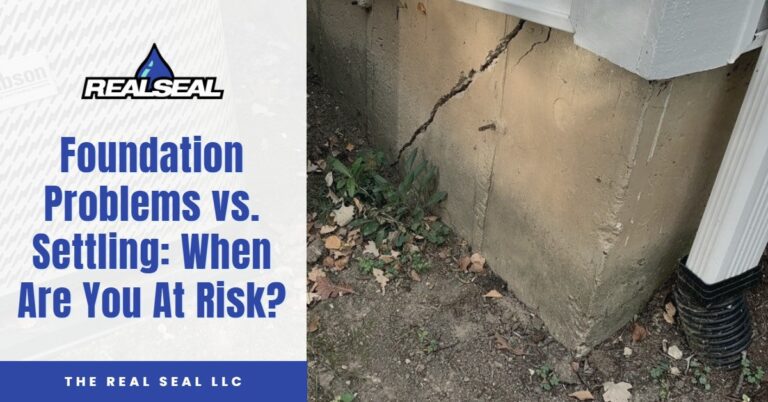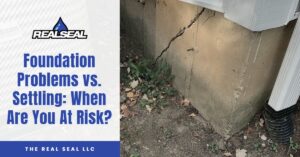Foundation Problems vs. Settling
Foundation problems and settling are two different things, but one can be the result of another. If your home experiences what professionals call “differential settlement,” it can lead to foundation problems. Not all foundation problems are serious, but most of them can be annoying or lead to bigger issues.
Your home is very important, and so is its foundation. The main goal of paying attention to foundation problems is to make sure your home’s structural integrity isn’t compromised.
Foundation Problems vs. Settling
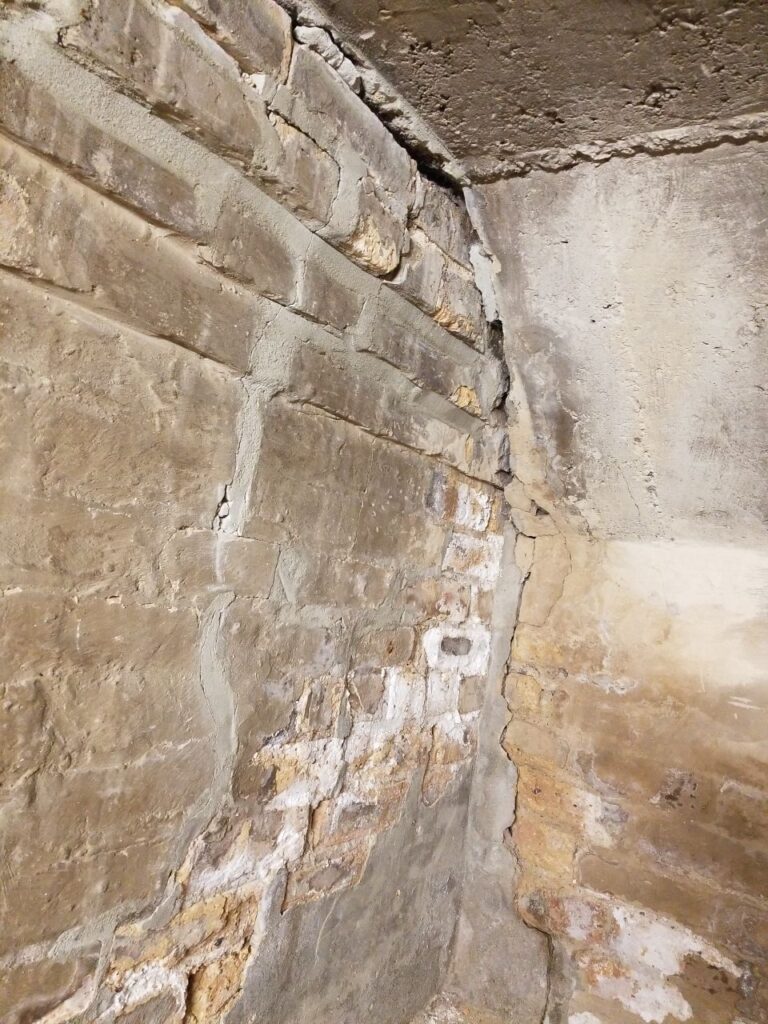
- Windows and doors are not closing correctly – This may be a minor nuisance, but sticking windows and doors may signify you have foundation problems.
- Floors are starting to warp – If your floors are warping, bowing, sinking, or are uneven, you might have foundation problems.
- Walls are bowing – If your foundation walls are moving inward, chances are you have foundation problems.
- Walls and floors are separating – Even if the movement is slight, if your walls and floors are separating from each other, you could have foundation problems.
- Floors are cracking – If your floors are cracking from one wall to another, it could mean you have foundation problems.
- Wallpaper is tearing – If your wallpaper is starting to tear, check behind to see if any wall cracks are forming.
- Diagonal cracks are forming near corners of doors and windows, running to the ceiling – Pay attention to any drywall cracks, no matter the size.
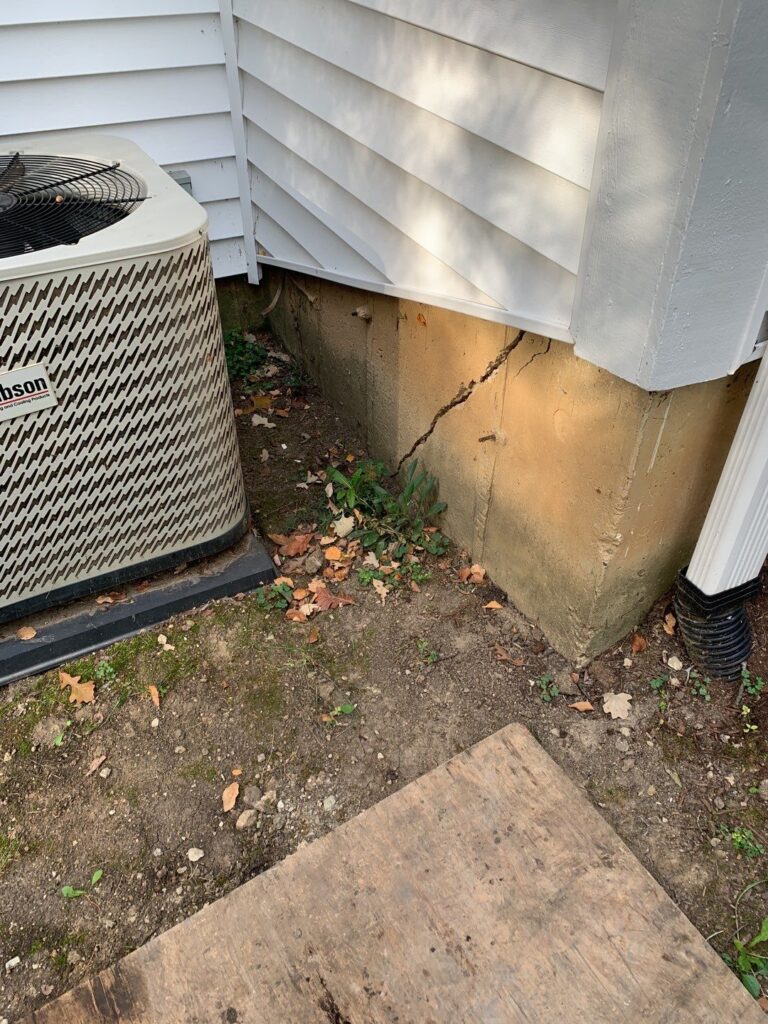
- Moldings are separating – Foundation problems could cause your walls, floors, and ceilings to move separately.
- Stair-step cracks are forming – If you notice stair-step cracks are forming on your concrete block walls or exterior brick fascia, you could have foundation problems.
- Your chimney or porch is separating from the rest of your home – Call a professional foundation repair expert to determine whether or not this is an issue with your home’s foundation or the foundation under your chimney or porch.
Types Of Foundation Settling
- Uniform settlement – Once your home is finished being built, your foundation will slightly settle into the soil beneath it. This settlement should be gradual, even, and under fractions of an inch.
- Differential settlement – Differential settlement is when your home and foundation settle at uneven rates. This type of settlement places stress on your foundation and can lead to problems such as the ones stated above.
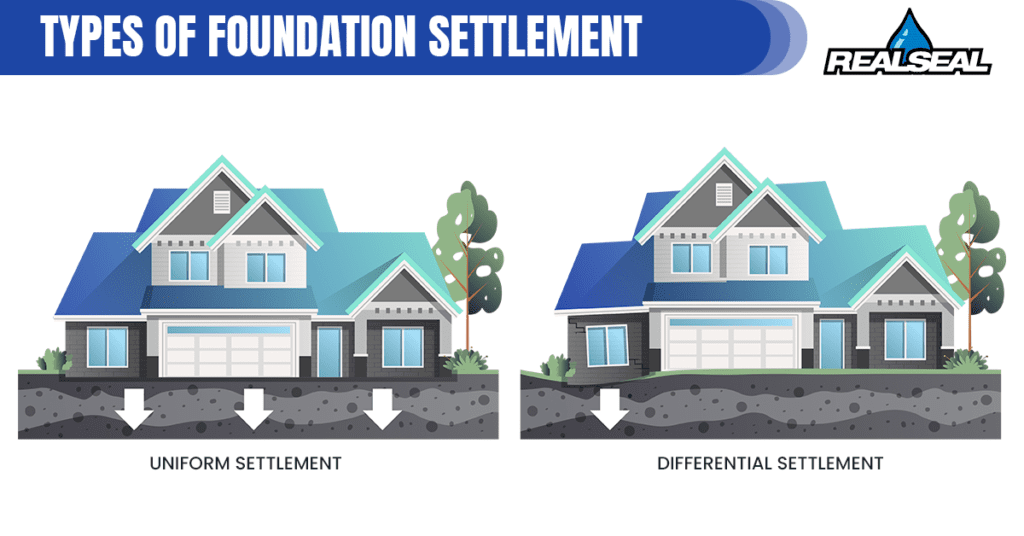
What Causes Foundation Settling?
There are several reasons why your foundation is settling. One of the most common reasons foundations settle is because the soil underneath wasn’t correctly compacted before construction began. Material that was buried underneath your foundation could start to degrade, leaving behind voids or pockets. Or, the soil underneath your foundation is made of too much clay, which is expanding and shrinking based on moisture content.
How Do Experts Repair Foundation Settling?
- Steel push piers – These piers are pushed into your soil until they reach load-bearing strata. Once they find strong enough soil to support your home, hydraulic jacks lift your foundation back to the maximum practical level.
- Helical piers – Also called screwpiles, these piers are twisted into the soil underneath your foundation until they reach load-bearing soil. Then, hydraulic jacks lift your home back to the maximum practical level. Helical Piers are great for slabs and low-weight foundations where push piers would lift the structure out of the ground before reaching load-bearing strata.
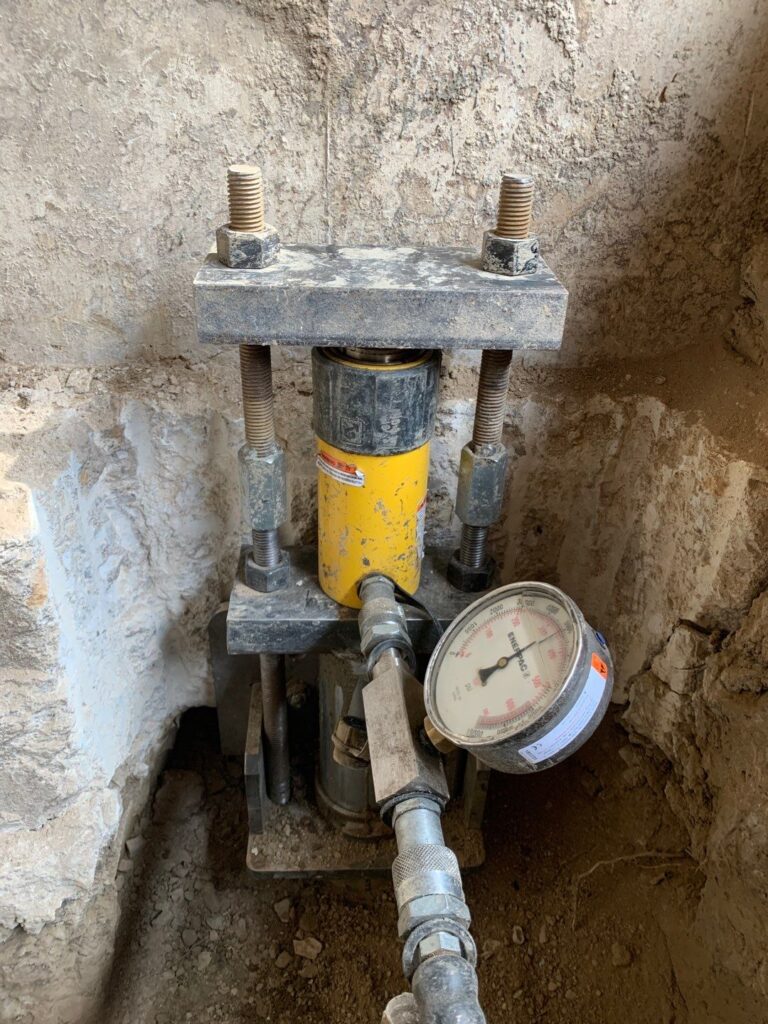
Who Repairs Foundation Problems & Settling Near Me?
If you live in the Greater Chicago area and have foundation problems or foundation settling, you should call The Real Seal! We’ll come out and determine if your foundation problems are a result of differential settlement or uniform settlement. Then, we’ll use our underpinning solutions to repair any ongoing settlement and prevent further settling. Call today for your free inspection and estimate. We also provide basement waterproofing, crawl space repair, concrete leveling, and more.
